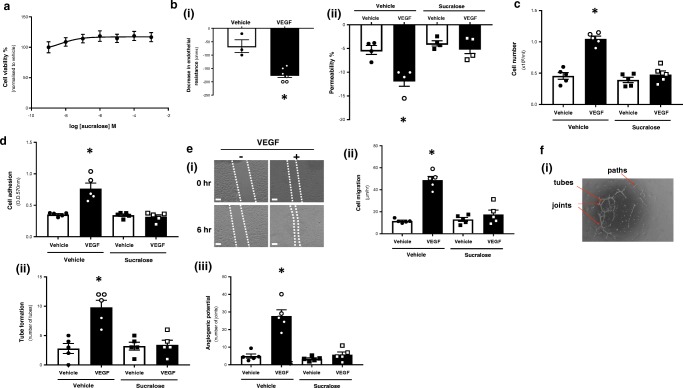Fig. 2.
An agonist for sweet taste receptors T1R2 and T1R3, sucralose, attenuates VEGF-induced angiogenic processes in the retinal microvascular endothelium. Panel a: cell viability of RMVEC was measured by CCK8 assay following exposure to sucralose (1 nM–1 mM). Panel b–f: changes in retinal endothelial cell: monolayer permeability (panel b), proliferation (panel c), adhesion (panel d), migration (panel e), tube formation (panel f (ii)) and angiogenic potential (panel f (iii)) were measured following exposure to sucralose (0.1 mM) in the presence (closed bars) and absence (open bars) of VEGF (100 ng/ml). Validation of FITC-dextran permeability assay is shown using TER with VEGF (panel b (i)). A representative image of the wound-healing assay (panel e (i)) and Matrigel™ assay (panel f (i)) is shown. n = 5. Data is expressed as mean ± S.E.M. *p < 0.05 versus vehicle for VEGF

